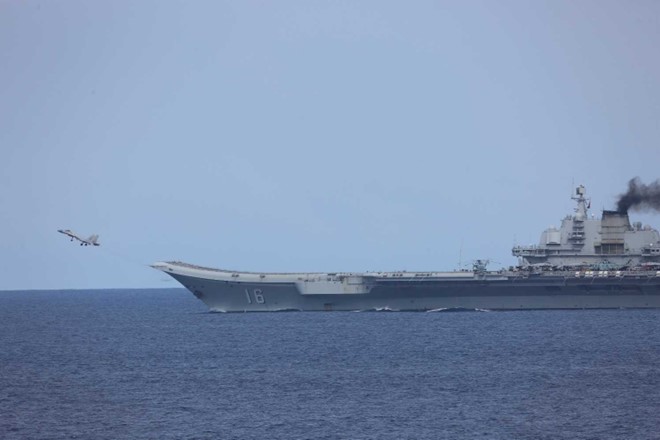“Taiwan’s network vulnerabilities are very real.”
Over the next two years, Taiwan plans to test a satellite program to ensure its command systems continue to operate should the country lose connectivity through its conventional links. As shown in the first article, according to the Singapore-based Straits Times, in September Taiwan Minister of Digital Affairs Audrey Tang announced the launch of a telecommunication network resilience plan. The article explains that international internet traffic currently relies heavily on fiber optic cables lining the ocean floor. There are 15 submarine data cables connecting Taiwan with the rest of the world. Taiwan would be cut off from the Internet should these cables be cut. According to the article, experts warn that Taiwan’s network vulnerabilities are very real.
As demonstrated in the second article from Chinese state-owned multi-language news source Xinhua, in President Xi Jinping’s speech kicking off the 20th National Congress in mid-October, Xi asserted that the Taiwan question remains an important matter for the China. He asserted that while China would continue to strive for peaceful reunification, it will not rule out the use of force. Such a message, it appears, could put even more urgency in Taiwan’s plans to improve its communications vulnerabilities.
Sources:
Yip Wai Yee, “Taiwan Plans for Ukraine-Style Back-Up Satellite Internet Network Amid Risk of War,” The Straits Times (Singapore-based daily),22 September 2022. https://www.straitstimes.com/asia/east-asia/taiwan-plans-for-ukraine-style-back-up-satellite-internet-network-amid-risk-of-war
Over the next two years, (Taiwan) is set to trial a N[ew] T[aiwan]$550 million (US$24.67 million) satellite programme that aims to keep Taiwan’s command systems running if conventional connections get cut, Ms. Tang (Taiwan’s minister of Digital Affairs) said. Several Taiwan companies are now in discussions with international satellite service providers, she added, without providing details.
Currently, international Internet traffic is mostly carried through fibre-optic cables lining the ocean floor. Taiwan is connected to the world via 15 submarine data cables. “The Internet used in Taiwan relies heavily on undersea cables, so if (attackers) cut off all the cables, they would cut off all of the Internet there,” Dr Lennon Chang, a cyber-security researcher at Monash University, told The Straits Times. “It makes sense for the government to have alternative forms of communication ready for emergency situations,” he added.
Already, some analysts say that concerns over Taiwan’s network vulnerabilities are very real.
“(CPC Congress) CPC to Unswervingly Advance Cause of National Reunification: Xi,” Xinhua (Chinese state-owned multi-language news source), 16 October 2022. https://english.news.cn/20221016/29113f9cbf3247978534dd1f4aee299e/c.html
Xi Jinping said… the Communist Party of China (CPC) will implement its overall policy for resolving the Taiwan question in the new era, and unswervingly advance the cause of national reunification. “Resolving the Taiwan question is a matter for the Chinese, a matter that must be resolved by the Chinese,” said Xi at the opening session of the 20th CPC National Congress.
“We will continue to strive for peaceful reunification with the greatest sincerity and the utmost effort, but we will never promise to renounce the use of force, and we reserve the option of taking all measures necessary…
Xi said that the wheels of history are rolling on toward China’s reunification…


